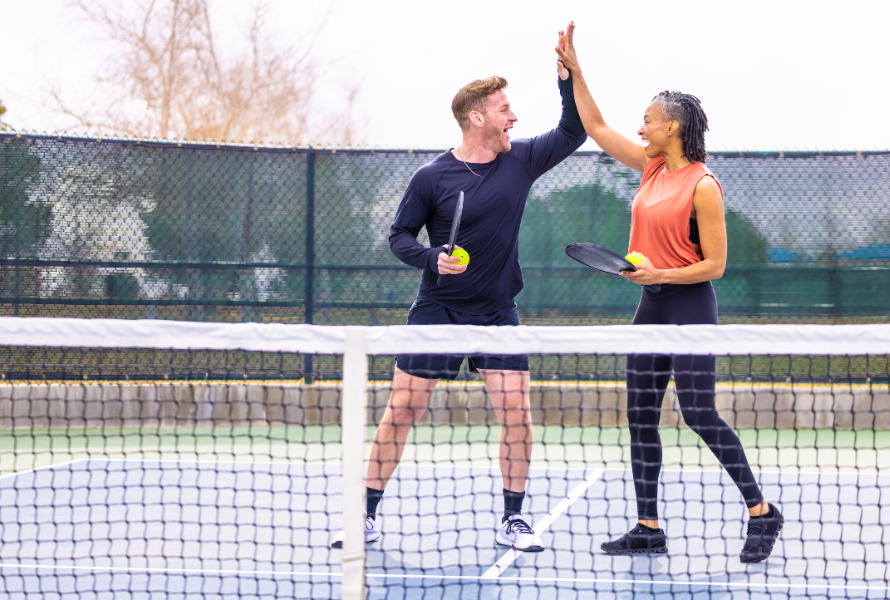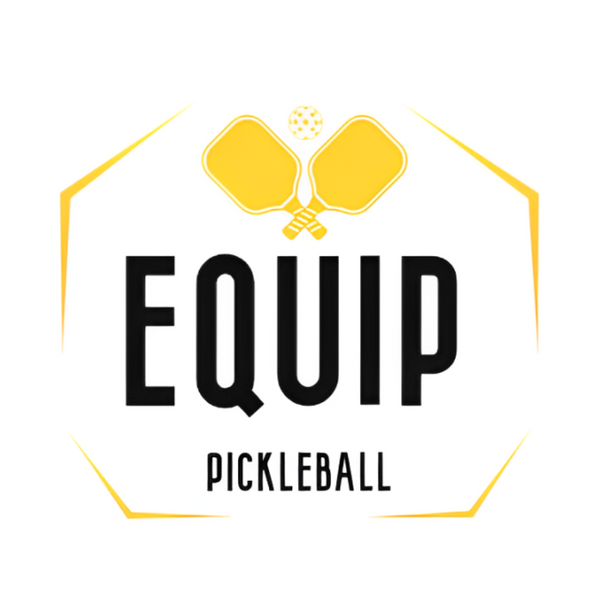
MASTERING PICKLEBALL STRATEGY | Doubles & Singles Tactics
Share
Mastering Pickleball Strategy
Mastering the strategic aspects of pickleball can give you a significant edge over your opponents. This section will cover advanced techniques and game plans to help you make smarter decisions on the court and improve your overall performance.
Doubles Strategy
Communication with Your Partner:
- Develop clear, concise calls (e.g., "Mine!", "Yours!", "Switch!")
- Discuss strategies between points and games
Positioning:
- Maintain proper court coverage with your partner
- Learn when to stack and when to play in standard formation
Third Shot Strategy:
- Decide between drops and drives based on opponent positioning
- Use the third shot to set up your move to the net
Net Play:
- Control the kitchen line with effective dinking
- Learn when to be patient and when to attack
Singles Strategy
Court Coverage:
- Develop efficient movement patterns to cover the entire court
- Return to the center of the court after each shot
Shot Selection:
- Use deep shots to keep your opponent back
- Employ short angles to pull your opponent off the court
Serve and Return Tactics:
- Vary your serve placement to keep opponents guessing
- Return serves deep to prevent your opponent from attacking
Advanced Tactics
Exploiting Weaknesses:
- Identify and target your opponent's weaker side
- Force your opponent to hit their least comfortable shots
Change of Pace:
- Mix up shot speed and spin to disrupt opponent's rhythm
- Use soft shots to set up power plays
Court Positioning:
- Control the kitchen line whenever possible
- Force your opponents into defensive positions
Poaching in Doubles:
- Learn when to cross over and intercept shots
- Use fake poaches to keep opponents off balance
Stacking in Doubles:
- Understand when and how to implement stacking strategies
- Use stacking to keep your stronger side in play more often
Timeout and Side Switch Management:
- Use timeouts strategically to break momentum or regroup
- Take advantage of side switches to adjust to court conditions
Situational Strategies:
- Playing Against Power Hitters: Stay patient and use soft shots to neutralize power. Keep the ball low to limit their attacking opportunities.
- Countering Dinkers: Look for opportunities to speed up the game. Use well-placed lobs to disrupt their net game.
- Windy Conditions: Adjust your shots based on wind direction and strength. Use the wind to your advantage on serves and lobs.
- Tournament Play: Manage your energy across multiple matches. Adapt your strategy based on tournament format (e.g., double elimination).
Mental Tactics
Momentum Management:
- Learn to recognize and capitalize on momentum shifts
- Stay composed during opponent's hot streaks
Pressure Points:
- Develop routines for high-pressure situations
- Focus on process rather than outcome during crucial points
Adaptability:
- Be prepared to adjust your game plan if initial strategies aren't working
- Learn to read opponents quickly and adapt accordingly
Remember, the best strategy is one that plays to your strengths while exploiting your opponent's weaknesses. Practice these tactics in friendly games before implementing them in competitive matches. As you become more comfortable with various strategies, you'll be able to adapt your game plan on the fly, making you a more formidable opponent.
Ready to explore the mental aspects of pickleball that can give you a competitive edge? Let's move on to Pickleball Game Psychology to learn how to stay focused and perform under pressure!
